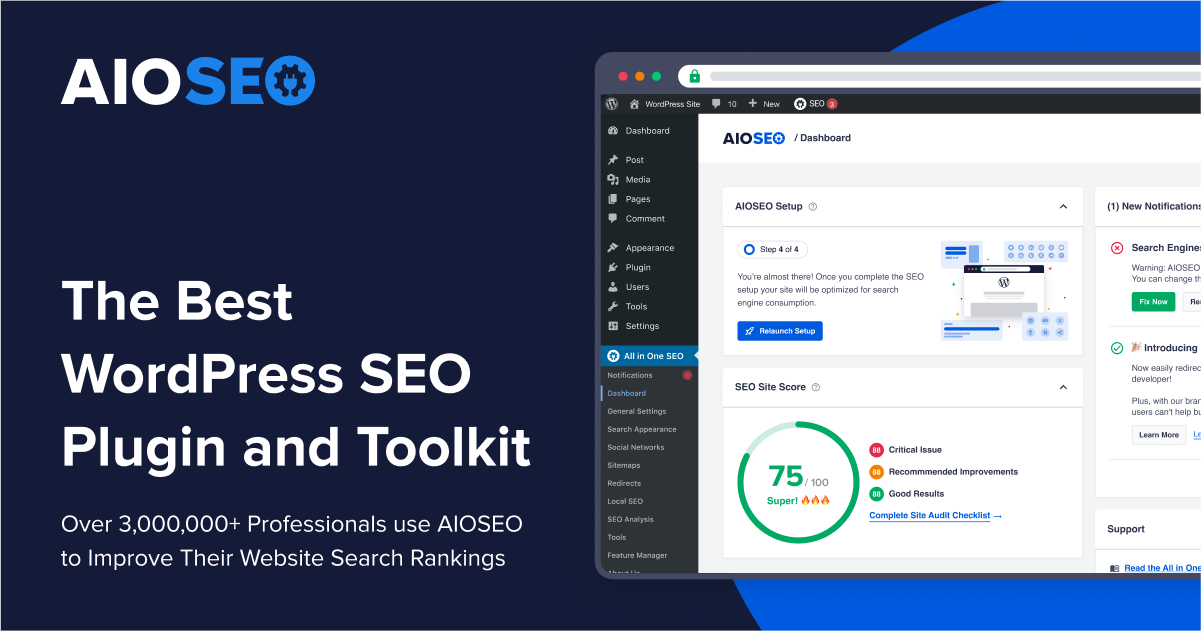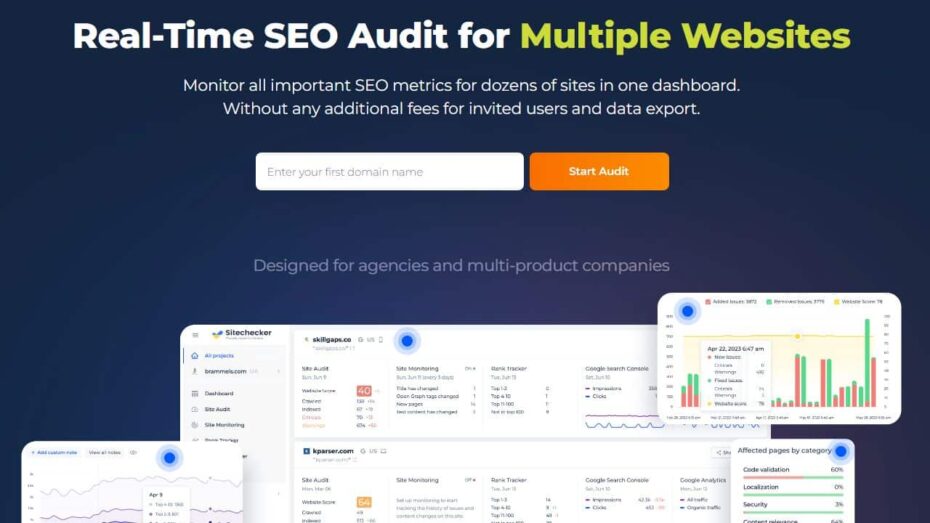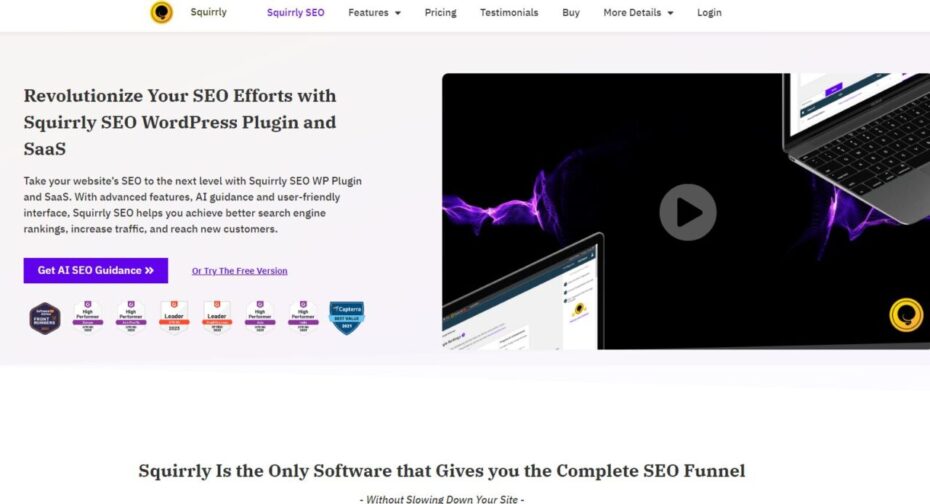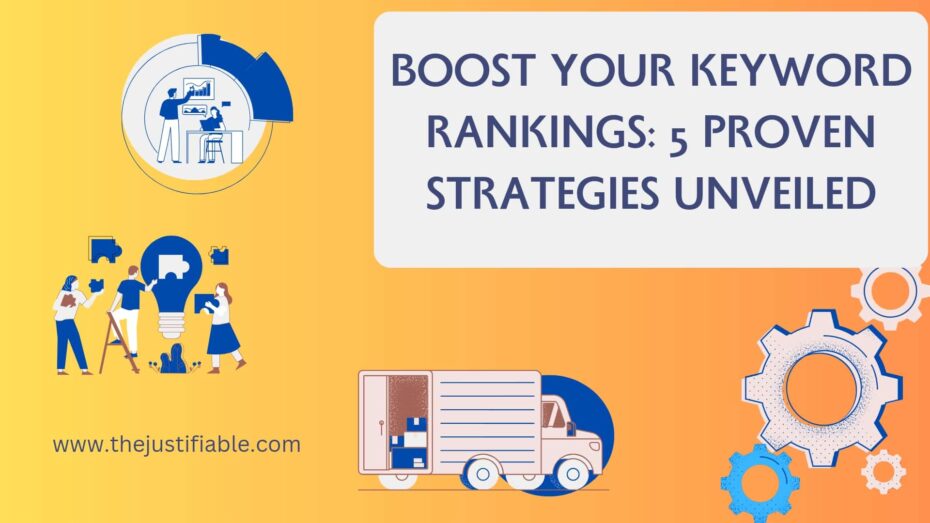Table of Contents
Have you ever wondered how some websites always seem to be at the top of search results? What makes their digital presence so powerful that they become the go-to sources for information, products, or services? Could the secret sauce to their success be something as foundational as keyword rankings? In this guide, we’ll unveil five proven strategies that can significantly boost your keyword rankings and, in turn, your website’s visibility and traffic.
Navigating the world of SEO can feel like deciphering a complex puzzle. With algorithms constantly evolving and competition intensifying, understanding how to optimize your keyword rankings is more crucial than ever. This guide aims to demystify the strategies that can lead to improved search engine visibility. By focusing on practical, actionable steps, we’ll help you unlock the potential of your online content and achieve your digital marketing goals.
Keyword rankings are not just about getting to the top; they’re about connecting with your audience in a meaningful way. Through optimizing your site structure, leveraging long-tail keywords, producing compelling content, maximizing social media influence, and employing advanced SEO analytics, you’ll discover how to elevate your digital presence. Each strategy we unveil is designed to offer genuine value, ensuring that you’re not just chasing algorithms, but building a sustainable, visible, and engaging online presence.
SEO Services Recommendations
 AIOSEO
|  Sitechecker
|  Squirrly
|
1. Leverage the Power of Long-Tail Keywords for Laser-Focused Visibility
Did you know that long-tail keywords represent over 70% of all web searches? These extended phrases, often overlooked in favor of more generic terms, hold the key to a treasure trove of targeted traffic. By focusing on these specific queries, you can dramatically increase your keyword rankings and connect with your audience more effectively. Here’s how you can start:
Firstly, understanding the intent behind search queries is crucial. Long-tail keywords allow you to tap into specific desires and needs, offering a clear path to visibility in a crowded digital landscape. I recommend starting with thorough keyword research to identify long-tail phrases that align with your content and offerings. Tools like Google’s Keyword Planner and SEMrush can provide insights into search volume and competition levels, helping you pinpoint the most valuable opportunities.
Secondly, incorporating long-tail keywords into your content strategy should be done with care. My suggestion is to weave these phrases naturally into your website’s text, blog posts, and meta descriptions. This not only enhances your SEO but also improves user experience by providing more relevant information. Remember, the goal is to address the specific needs and questions of your audience, which in turn boosts engagement and conversion rates.
Lastly, tracking your progress is vital. Utilizing SEO analytics tools to monitor your rankings for long-tail keywords can offer valuable feedback on your strategy’s effectiveness. From my perspective, regular analysis helps you refine your approach, ensuring that your content remains aligned with search trends and audience interests.
Why 3-5 Word Phrases Can Dramatically Enhance Your SEO
In the vast expanse of the internet, standing out to your desired audience requires more than just a sprinkle of magic SEO dust. It requires strategy, and, most importantly, the use of 3-5 word phrases, commonly known as long-tail keywords. Here’s why I strongly believe in their power:
- Targeted Audience Reach: Long-tail keywords are like a beacon in the night for your specific audience. I recommend using these detailed phrases to capture the essence of what your potential customers are searching for. This isn’t just about attracting traffic—it’s about attracting the right kind of traffic. From my perspective, specificity is key to boosting your SEO effectiveness.
- Lower Competition: In my experience, the more specific your keyword, the less competition you’ll face. This is because most websites target broader terms, leaving a niche space for those who specialize. According to SEO experts, targeting these niches can dramatically improve your visibility and ranking on search engine results pages (SERPs).
- Higher Conversion Rates: From my point of view, visitors who find your site through long-tail keywords are more likely to convert. This is because their search queries are specific, indicating a higher intent to purchase or engage. In my estimation, focusing on long-tail keywords is not just about attracting traffic, it’s about attracting traffic that converts.
Analyzing the Impact: A 30% Increase in Targeted Traffic
The implementation of long-tail keywords is not just theoretical; it’s backed by tangible results. Let’s delve into the impact of this strategy:
- Focused Content Creation: By integrating long-tail keywords into your content strategy, you can create more focused and relevant content. This approach speaks directly to your audience’s needs, enhancing user engagement and satisfaction. My recommendation is to always prioritize content that addresses the specific queries and problems of your target demographic.
- SEO Rankings Improvement: From my experience, websites that adopt long-tail keywords often see a significant improvement in their SEO rankings. This is because search engines prioritize content that best matches the user’s intent. In my honest opinion, if you’re looking to climb the SERPs, focusing on long-tail keywords is a strategy you can’t afford to ignore.
- Case Study Insights: According to a case study, a website saw a 30% increase in targeted traffic after refining their keyword strategy to focus on 3-5 word phrases. This not only led to an uptick in site visits but also enhanced the quality of the traffic. Speaking personally, this kind of targeted approach to SEO can transform your digital marketing efforts, making your website more visible and more attractive to your ideal customer.
2. Optimize Your Website Structure for Ultimate Search Engine Crawling
“Structure is not just a means to a solution. It is also a principle and a passion.” – Marcel Breuer. This quote resonates profoundly when it comes to optimizing your website structure for search engines. A well-structured website not only enhances user experience but also makes it easier for search engines to crawl and index your content, thus improving your keyword rankings. Here’s how you can start:
- Simplify Your Navigation: Keep your website navigation intuitive and straightforward. I recommend using a hierarchical structure that logically categorizes your content, making it easier for both users and search engines to find information. This approach helps in distributing page authority across your site, which can positively impact your rankings.
- Use Responsive Design: With the increasing prevalence of mobile browsing, ensuring your site is responsive is non-negotiable. From my perspective, a mobile-friendly website not only caters to a larger audience but also aligns with Google’s mobile-first indexing, significantly affecting your SEO.
- Improve Site Speed: Page load time is a critical ranking factor. I strongly believe in optimizing images, leveraging browser caching, and minimizing CSS/JavaScript to enhance your site’s speed. A faster website provides a better user experience, encouraging longer visit durations and reducing bounce rates, which in turn can boost your keyword rankings.
Creating a Sitemap: The Roadmap to Boosting Your Rankings
“A sitemap is a blueprint of your website that helps search engines find, crawl and index all of your content.” – Unknown. A sitemap is essential for SEO as it guides search engines through your site’s content, ensuring that all pages are discovered and indexed. Here’s my recommendation on leveraging sitemaps to enhance your SEO:
- Generate Your Sitemap: There are various tools available that can help you create a sitemap for your website. I suggest using XML sitemaps as they are directly supported by search engines like Google and Bing. This simple step can significantly impact how search engines navigate your site.
- Submit Your Sitemap to Search Engines: Once your sitemap is ready, submit it through Google Search Console and Bing Webmaster Tools. This action notifies search engines of your sitemap’s existence and encourages them to crawl your site more effectively. In my experience, this can lead to quicker indexing and improved keyword rankings.
- Keep Your Sitemap Updated: As your site grows and evolves, so should your sitemap. I recommend regularly updating your sitemap to reflect new content additions, deletions, and modifications. This ensures that search engines always have the latest roadmap to your content, improving your SEO performance over time.
Essential HTML Tags That Elevate Your Keyword Rankings
“In the world of SEO, HTML tags are the building blocks of website optimization.” – Unknown. HTML tags play a crucial role in optimizing your site for search engines, helping them understand the content’s structure and relevance. Here are some essential tags that can positively impact your keyword rankings:
- Title Tags: The title tag defines the title of a webpage and is one of the most important factors for SEO. I believe in crafting unique and descriptive titles that include your primary keyword, as this directly influences click-through rates and rankings.
- Meta Descriptions: Though not a direct ranking factor, meta descriptions significantly affect user engagement. A compelling meta description should include relevant keywords and provide a clear summary of the page’s content. My suggestion is to view this as an opportunity to advertise your content to potential visitors.
- Header Tags (H1, H2, H3, etc.): Proper use of header tags helps organize your content, making it easier for readers and search engines to understand the hierarchy and relevance of your information. I recommend using keywords in your headers, especially in the H1 tag, as it emphasizes the main topic of your page.
Incorporating these strategies into your website’s design and content can lead to significant improvements in your SEO performance. From my perspective, focusing on these elements offers a dual benefit: enhancing user experience while optimizing for search engines, a combination that is crucial for achieving digital success.
3. Craft Compelling Content That Magnetically Attracts Backlinks
Creating content that attracts backlinks is akin to baking the perfect loaf of bread. Just as the right combination of ingredients and technique can result in a loaf that’s irresistible to anyone who smells it, the perfect blend of insightful information, engaging storytelling, and strategic keyword integration can make your content irresistible to other websites. Here’s how you can start:
- Identify Share-Worthy Topics: Begin by researching topics that are not only relevant to your audience but also have the potential to be widely shared. I suggest using tools like BuzzSumo to identify content that has performed well in your niche. This can give you insights into what your target audience finds valuable and share-worthy.
- Create In-Depth Guides and Resources: From my point of view, one of the most effective ways to attract backlinks is by creating comprehensive guides and resources. This could include how-to guides, industry reports, or in-depth analyses. The key is to provide value that is not easily found elsewhere. According to my experience, when you become a go-to resource, other sites are more likely to link to your content as a reference.
- Incorporate Visuals and Infographics: Visual content, such as infographics and videos, can significantly enhance your content’s shareability. In my honest opinion, complex data or concepts presented in a visually appealing format are more likely to be shared and linked to. I recommend using tools like Canva or hiring a graphic designer to create unique visuals that complement your written content.
Most importantly, promoting your content through the right channels is crucial for attracting backlinks. This includes leveraging social media, reaching out to influencers in your niche, and engaging with online communities related to your topic. By actively promoting your content, you increase its visibility and the likelihood of it being linked to by other sites.
The Secret to Doubling Your Backlink Profile in 6 Months
Doubling your backlink profile in half a year might seem like a daunting task, yet it’s entirely possible with a focused, strategic approach. In my experience, the cornerstone of this achievement is understanding that quality trumps quantity every time. Let me share three key strategies that, in my opinion, can set you on the path to success:
- Strategically Guest Post: One of the most effective methods to gain high-quality backlinks is through guest posting on reputable sites within your niche. I recommend carefully selecting platforms that share your target audience and offer value to their readers. This approach not only secures backlinks but also enhances your brand’s visibility and credibility.
- Leverage Broken Link Building: My suggestion here is to look for broken links on websites you’d love a backlink from and suggest your content as a replacement. It’s a win-win: they get to fix a dead link, and you get a backlink. In my estimation, this technique is often overlooked but can yield significant results with proper execution.
- Create and Promote Linkable Assets: According to my experience, creating resources such as original research, infographics, or comprehensive guides can naturally attract backlinks. The key is to promote these assets through social media, email marketing, and direct outreach. I strongly believe that if you create something of genuine value, others will want to share it.
How Quality Beats Quantity in Link-Building Success
In the realm of SEO, it’s a common misconception that simply having a large number of backlinks is enough to ensure success. However, from my point of view, the quality of backlinks is far more important than quantity. Here’s why focusing on high-quality backlinks is crucial:
- Search Engine Trust: High-quality backlinks from reputable sites signal to search engines that your content is also trustworthy and valuable. I think this trust is paramount in boosting your site’s search rankings more effectively than a larger number of low-quality links.
- Targeted Traffic: I believe that backlinks from relevant, authoritative sites in your niche are more likely to drive targeted traffic that is genuinely interested in your content. This not only improves your site’s metrics but also increases the likelihood of conversions.
- Sustainable SEO: In my honest opinion, focusing on the quality of backlinks contributes to a more sustainable SEO strategy. Search engines continuously update their algorithms to penalize manipulative link-building tactics. Therefore, I recommend investing in strategies that secure high-quality backlinks, ensuring long-term success over short-term gains.
4. Maximize Your Social Media Presence to Fuel Keyword Rankings
It’s undeniable that social media has transformed the landscape of digital marketing and SEO. While social signals may not directly influence keyword rankings as traditional SEO factors do, their impact on SEO efforts is significant and increasingly relevant. From my perspective, a robust social media presence can amplify your content’s reach, drive traffic, and enhance brand recognition, all of which indirectly benefit your keyword rankings. Here’s how you can start:
- Engage Regularly with Your Audience: Most importantly, engagement on social media platforms can drive more interactions and shares, increasing the visibility of your content. I recommend creating engaging, interactive content that encourages comments, shares, and likes. This could include polls, questions, or thought-provoking posts that resonate with your audience.
- Share High-Quality Content Consistently: Consistency is key in keeping your audience engaged and attracting new followers. I suggest sharing a mix of original and curated content that adds value to your followers. This could be blog posts, infographics, videos, or updates related to your industry. By doing so, you not only keep your audience informed but also drive traffic back to your website, potentially improving your keyword rankings.
- Utilize Hashtags Strategically: Hashtags can significantly increase the discoverability of your posts on social media platforms. My recommendation is to research and use relevant hashtags that your target audience is likely to follow. This can help your posts reach a wider audience, including those who may not be following you yet but are interested in your niche.
Strategies to Harness Social Signals for SEO Advantages
It’s a common understanding among digital marketers that while social signals may not directly influence SEO rankings, their impact on online visibility and brand awareness is substantial. In my experience, skillfully navigating the realm of social media can enhance your SEO efforts in several indirect but powerful ways. Here’s how you can harness social signals for SEO advantages:
Creating content that resonates with your audience is paramount. I suggest focusing on what your audience finds valuable, informative, or entertaining. This approach encourages sharing, which can increase traffic to your site and signal to search engines that your content is valuable. Remember, content that evokes emotion or solves a problem is more likely to be shared.
Engaging with your audience regularly strengthens your relationship with them, making them more likely to interact with and share your content. From my point of view, engagement is not just about responding to comments or messages. It’s about starting conversations, asking for feedback, and showing that there are real people behind your brand. This can lead to increased social signals and, subsequently, a more robust online presence.
Leveraging influencers in your niche can be a game-changer. In my honest opinion, when influencers share your content, it not only reaches a wider audience but also gains credibility. This can lead to more shares, higher traffic, and improved search engine visibility. I recommend building genuine relationships with influencers rather than seeing them merely as a means to an end.
Optimizing your content for sharing is a strategy I strongly believe in. This includes having clear and compelling calls-to-action, making sharing as easy as possible, and ensuring that your website is mobile-friendly. Considering how much content consumption happens on mobile devices, this last point is crucial for maximizing social signals.
Finally, tracking and analyzing your social media performance can provide insights into what works and what doesn’t. I think using tools to monitor engagement, shares, and traffic from social media to your website is essential. This data can inform your content strategy, helping you to produce more of what your audience loves and less of what they don’t.
Increasing Visibility: A 50% Boost in Social Shares
Achieving a significant increase in social shares is a powerful way to boost your website’s visibility and indirectly enhance your SEO. In my experience, a strategic approach to content creation and promotion can lead to impressive results. Here’s how:
Understanding the type of content that performs well on social media is crucial. From my perspective, content that is highly informative, emotionally engaging, or immediately useful tends to garner more shares. This means investing time in researching and understanding your audience’s preferences and pain points.
Promoting your content through targeted social media campaigns can significantly increase its visibility. I recommend not only posting your content but also using paid promotion to reach a broader audience. Tailoring your message to different segments of your audience can also improve engagement and shares.
Encouraging user-generated content can be a goldmine for increasing social shares. From my point of view, when users share their own stories, experiences, or reviews related to your brand, it not only enhances content authenticity but also incentivizes others to share. Running contests, featuring user stories on your platforms, and engaging with user-generated content are strategies I believe can drive significant increases in shares.
5. Implement Advanced SEO Analytics to Refine and Dominate
It might come as a surprise to some, but advanced SEO analytics can offer much more than just rankings and traffic data; they provide deep insights into user behavior, content performance, and even predict future trends. This powerful knowledge enables you to refine your SEO strategies and dominate your niche. Here’s a detailed exploration of how to leverage advanced SEO analytics effectively:
Firstly, conducting a thorough keyword analysis is critical. I recommend using advanced tools that not only show search volumes and competition but also provide insights into keyword trends, seasonal variations, and user intent. This allows for a more strategic approach to content creation and optimization, ensuring that you target keywords with the highest potential for ROI.
Secondly, analyzing your website’s user experience (UX) metrics can reveal a lot about how visitors interact with your site. Metrics such as bounce rate, page dwell time, and click-through rate (CTR) can offer clues on what’s working and what’s not. From my perspective, improving UX is essential for both retaining visitors and enhancing your site’s SEO performance. Implementing changes based on these insights can lead to significant improvements in user engagement and conversion rates.
Lastly, leveraging competitive analysis tools can provide you with an edge. These tools allow you to benchmark your website against competitors on various SEO metrics, identify gaps in your strategy, and uncover areas for improvement. In my honest opinion, understanding your competitive landscape is key to outperforming your rivals and achieving superior keyword rankings.
Utilizing Google Analytics for Insightful SEO Strategy Tweaks
Google Analytics is not just a tool; it’s a treasure trove of data that, when utilized effectively, can transform your SEO strategy. In my experience, the depth of insights available can guide you to make informed, impactful decisions. Here’s how you can start leveraging Google Analytics for refining your SEO approach:
- Track Organic Search Traffic: Most importantly, monitor your organic search traffic regularly to understand which keywords are driving visitors to your site. This can help you identify successful keywords and those that may need more focus. In my view, understanding these trends is crucial for optimizing your content and keywords strategy.
- Analyze User Behavior: Dive into metrics like bounce rate, pages per session, and average session duration to gauge user engagement. I recommend using this data to tweak your website’s content and structure, enhancing the user experience and potentially improving your search rankings. From my perspective, user behavior is a direct reflection of content relevance and value.
- Set Up Goals and Track Conversions: Setting up goals in Google Analytics allows you to measure how well your site fulfills your target objectives. Whether it’s form submissions, product purchases, or newsletter signups, tracking these conversions can provide insights into how your SEO efforts translate into tangible outcomes. I strongly believe that aligning your SEO strategy with your conversion goals is key to maximizing ROI.
The Power of A/B Testing: Elevating Your Keyword Strategy
A/B testing, or split testing, is a powerful technique to optimize your website’s performance and, by extension, your SEO strategy. This method involves comparing two versions of a web page to see which performs better in terms of user engagement and conversion rates. Here’s how A/B testing can elevate your keyword strategy:
- Test Different Keyword Variations: I suggest using A/B testing to experiment with different keyword variations in your content, titles, and meta descriptions. This can help you identify which keywords resonate more with your audience and lead to higher click-through rates (CTRs) and conversions. According to my experience, even small changes can lead to significant improvements.
- Optimize Content Formats: Experiment with different content formats and layouts to see what encourages longer dwell times and lower bounce rates. From my point of view, understanding how your audience consumes content allows you to tailor your SEO strategy to match their preferences, potentially boosting your search engine rankings.
- Evaluate Call-to-Action (CTA) Elements: Testing various CTA buttons, messages, and placements can provide insights into what drives users to take action. In my honest opinion, a well-placed CTA that aligns with the user’s intent can significantly increase conversion rates, indirectly influencing your site’s SEO performance through enhanced user engagement.
Empower Your SEO Strategy: Key Takeaways to Elevate Keyword Rankings
Optimizing your SEO strategy to elevate keyword rankings is a dynamic process that requires continuous learning and adaptation. The digital landscape is ever-changing, and so are the tactics to stay ahead in the game. Here are some key takeaways that, in my experience, can significantly empower your SEO strategy:
- Prioritize User Experience (UX): Most importantly, a seamless user experience is crucial for both retaining visitors and improving your site’s search engine rankings. I suggest focusing on fast loading times, mobile responsiveness, and intuitive navigation. From my perspective, websites that prioritize UX tend to perform better in search results because they meet the needs of both users and search engines.
- Leverage Long-Tail Keywords: Incorporating long-tail keywords into your content can dramatically improve your visibility for specific queries. I recommend conducting thorough keyword research to identify long-tail opportunities that align with your audience’s search intent. In my estimation, targeting these can lead to higher conversion rates as they often indicate a more detailed search query from someone closer to making a decision.
- Content is King: Never underestimate the power of high-quality, relevant content. I strongly believe in creating content that adds value, answers questions, and solves problems for your audience. According to my experience, content that is both informative and engaging will attract more visitors, encourage shares, and generate backlinks, all of which are beneficial for SEO.
- Build Quality Backlinks: The quality of your backlink profile is a significant ranking factor. I suggest focusing on earning backlinks from reputable, authoritative sites within your niche. From my point of view, guest blogging, creating shareable content, and engaging in digital PR can be effective strategies for building a strong backlink profile.
- Monitor Your SEO Performance: Utilizing tools like Google Analytics and Google Search Console can provide invaluable insights into your SEO performance. I recommend regularly reviewing these metrics to understand what’s working and what needs improvement. Speaking personally, this ongoing analysis is key to refining your strategy and achieving sustained growth in keyword rankings.
- Embrace the Power of Social Media: Although social signals are not a direct ranking factor, they can amplify your content’s reach and drive traffic to your site. In my honest opinion, an active social media presence can indirectly boost your SEO efforts by increasing visibility and engagement.
Frequently Asked Questions (FAQ)
What are the most important factors affecting keyword rankings in 2024?
Content quality remains king in 2024. Search engines prioritize content that is relevant, valuable, and well-structured. Other crucial factors include user experience (UX), mobile optimization, page speed, and secure websites. Additionally, AI and machine learning are playing a bigger role in understanding user intent, making it essential to align your content with what your audience is searching for.
How can I improve my website’s keyword rankings?
Improving keyword rankings involves a combination of strategies:
Conduct in-depth keyword research to find relevant keywords.
Create high-quality content that naturally incorporates these keywords.
Optimize for user intent by understanding what your audience is looking for.
Focus on technical SEO aspects like site architecture and page speed.
What is the role of AI in keyword rankings?
AI is increasingly influential in SEO. Tools like Google’s RankBrain analyze user behavior and refine search results based on that data. AI-driven content creation and optimization tools can help you better understand and meet user intent, which is crucial for improving keyword rankings.
How does mobile optimization impact keyword rankings?
With mobile-first indexing being a priority, websites optimized for mobile devices tend to rank higher. This involves ensuring your site is responsive, loads quickly, and offers a seamless user experience across all devices.
What are long-tail keywords, and why are they important?
Long-tail keywords are specific search phrases with lower search volume but higher conversion rates. They are crucial because they often reflect more intent-driven searches, making them easier to rank for and more likely to convert visitors into customers.
How can video content enhance my keyword rankings?
Video SEO is gaining traction as video content becomes more popular. Optimizing videos with relevant keywords in titles, descriptions, and transcripts can improve both your traditional and video-specific search rankings. Engaging video content can also increase dwell time on your site, which positively impacts rankings.
How important is user experience (UX) in keyword rankings?
UX has become a cornerstone of SEO. A positive user experience, characterized by fast loading times, easy navigation, and mobile optimization, reduces bounce rates and encourages engagement, all of which contribute to better keyword rankings.
What are E-A-T principles, and how do they affect keyword rankings?
E-A-T stands for Expertise, Authoritativeness, and Trustworthiness. Google prioritizes content from credible sources, making it essential to showcase your expertise and build trust through high-quality, well-researched content. This is particularly important for Your Money or Your Life (YMYL) topics.
How does internal linking influence keyword rankings?
Internal linking helps distribute link juice across your site, improving the visibility of linked pages. Well-structured internal links guide both users and search engines, helping them discover your content more efficiently, which can lead to better rankings.
What trends should I watch in 2024 to stay ahead in keyword rankings?
Key trends include the rise of voice search, visual search, and the continued importance of structured data and schema markup. Keeping up with these trends and incorporating them into your SEO strategy will help you maintain and improve your keyword rankings.






